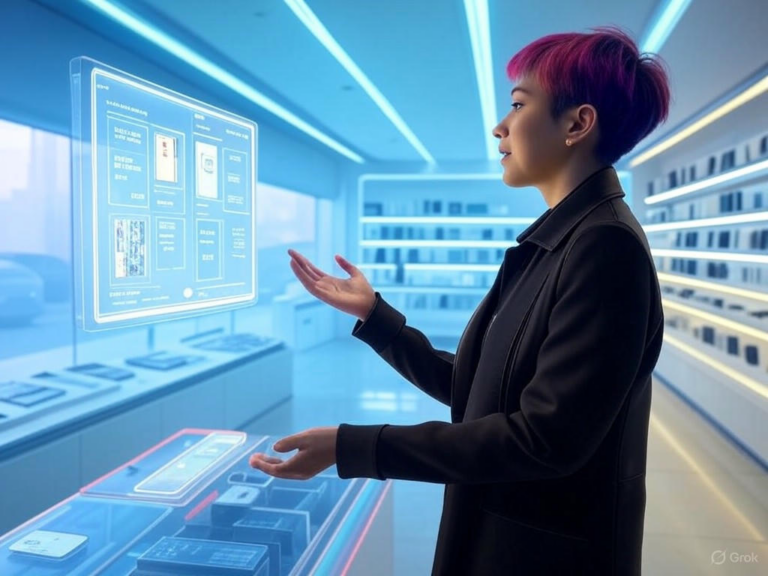
AI CEO Shares Key Hiring Mistakes and Lessons
AI CEO Michael Truell Reveals Critical AI Hiring Mistakes That Slowed Down His Company’s Growth
Have you ever wondered if your hiring process is holding back your team’s potential? In the fast-paced tech world of 2025, getting recruitment right can make or break a startup. Michael Truell, CEO and co-founder of Anysphere, the innovative company behind the AI coding tool Cursor, recently opened up about his early AI hiring mistakes on Lenny’s Podcast.
Truell admitted that his team hired too slowly, going against the typical startup rush. This cautious strategy, meant to ensure quality, actually delayed Anysphere’s momentum during its early days. It’s a stark reminder that in the AI era, balancing speed and thoroughness in hiring can be the difference between scaling quickly or falling behind.
The Prestige Trap: Overvaluing Elite Credentials in AI Hiring
One of the biggest AI hiring mistakes Truell made was overemphasizing candidates’ backgrounds from top-tier schools. He focused heavily on prestigious credentials, which narrowed his options and overlooked talented individuals with diverse experiences. Imagine missing out on a brilliant engineer just because they didn’t attend an Ivy League university—it’s a common trap that can stifle innovation.
“We tried to be patient on hiring,” Truell shared, aiming for team members with intellectual curiosity and experimentation skills. Yet, this approach limited access to a broader talent pool. As Anysphere soared to a $9 billion valuation after a major funding round led by Thrive Capital, Truell realized that true growth comes from valuing potential over pedigree.
The Changing Landscape of Recruitment in the AI Era
AI Tools Transforming the Hiring Process
AI is reshaping how we approach recruitment, but it’s not without its challenges. By 2025, about 95% of initial candidate evaluations use AI tools to speed up decisions and match skills to company needs. This shift highlights how AI hiring mistakes can arise from over-reliance on technology, potentially excluding great fits.
With 87% of companies now adopting AI for hiring, the process is becoming fairer and more inclusive, tackling issues like bias. Still, it’s crucial to use these tools wisely to avoid unintended errors, such as dismissing candidates based on rigid algorithms.
Common Errors in AI-Driven Recruitment to Avoid
One frequent pitfall is letting AI systems filter candidates too strictly, often rejecting qualified people due to missing keywords on resumes. A Harvard Business School study revealed that AI tools have rejected over 10 million viable candidates in the U.S. alone because of these inflexible criteria. This is a prime example of how AI hiring mistakes can lead to lost opportunities for both businesses and job seekers.
Think about it: What if an applicant has transferable skills from a non-traditional path? AI might overlook them, emphasizing why human insight is essential.
Best Practices for Balancing AI with Human Oversight
To steer clear of these AI hiring mistakes, experts suggest treating AI as a helper, not the final decision-maker. HR teams should review AI-generated shortlists and tweak filters to catch overlooked talent. This hybrid method combines AI’s efficiency with human judgment, ensuring a more balanced approach.
For instance, incorporate structured interviews where people assess nuances like creativity and cultural fit. By doing so, you can build teams that truly drive innovation while minimizing errors.
The New Imperative for Tech Leaders
Tech CEOs face immense pressure in this AI-driven world, where 74% admit they could lose their jobs in two years without delivering AI results. This urgency extends to hiring, making it vital to avoid AI hiring mistakes that could derail progress. Meanwhile, 94% of CEOs suspect employees are using generative AI tools unofficially, pointing to governance gaps.
It’s fascinating how AI is challenging traditional leadership—89% of CEOs believe AI can craft strategies as well as human executives. So, how can leaders adapt without repeating common pitfalls?
Avoiding Widespread Errors in AI Strategies
Many CEOs fall into the “AI commodity trap,” thinking off-the-shelf tools suffice for complex needs, which is a risky move. About 87% overestimate these solutions, and 35% of AI projects might be “AI washing,” focused on appearances rather than real impact. These issues often stem from AI hiring mistakes, like not bringing in experts who can customize AI for specific goals.
To combat this, start by defining clear objectives for AI in your organization. A simple step: Assess your team’s AI literacy and invest in training to prevent future missteps.
The Human Factor in Tackling AI Hiring Mistakes
Truell’s story shows that effective hiring blends AI’s strengths with human intuition. While AI streamlines processes, it can’t fully replace spotting hidden gems in candidates. Job seekers are also navigating this, often using AI for applications, but doing it wrong can blend them into the crowd.
Adopting an Editor-First Strategy
That’s where the “editor-first” approach shines—use AI to draft content, then personalize it with your unique story. This method helps avoid AI hiring mistakes by ensuring applications stand out through genuine input. For example, a candidate might use AI to outline a cover letter but add personal anecdotes to make it memorable.
By prioritizing human touches, both recruiters and applicants can create more authentic connections. It’s a practical way to leverage AI without losing what makes us human.
Key Lessons for Growing Tech Companies
From Truell’s experiences, here are actionable takeaways to dodge AI hiring mistakes and foster growth:
- Expand your search beyond elite backgrounds to find hidden talent with real potential.
- Speed up hiring without sacrificing quality—patience isn’t always the answer.
- Use AI tools but always involve human checks to maintain fairness.
- Prioritize diverse perspectives for stronger, more innovative teams.
- Remember, overlooking candidates due to AI hiring mistakes can cost your company big.
One tech CEO’s memo summed it up: Before expanding your team, prove AI can’t handle the task first. This mindset shift can save resources and boost efficiency.
The Future of Leadership Recruitment
As Anysphere thrives, Truell’s insights highlight how avoiding AI hiring mistakes is key to building resilient teams. Studies show that 50-70% of new leaders fail within 18 months, often due to flawed hiring methods. Handling high-volume applications wisely, with AI as a support tool, can make all the difference.
Picture a scenario where your company spots and nurtures overlooked talent, leading to breakthroughs. That’s the power of a thoughtful approach.
Conclusion: Embracing a Balanced Approach
Michael Truell’s reflections on his hiring errors provide a roadmap for tech leaders everywhere. By steering clear of AI hiring mistakes, companies can harness AI’s benefits while keeping human judgment at the forefront. The goal is to build diverse, dynamic teams that propel innovation in this evolving landscape.
What are your thoughts on these lessons? Have you encountered similar challenges in your hiring process? Share your experiences in the comments below, and explore more tips on our site for optimizing your recruitment strategy.
References
1. Business Insider. “CEO of Anysphere on early hiring mistakes.” Source
2. HR Dive. “Tech CEOs and AI in hiring.” Source
3. NBC Los Angeles. “Common job seeker mistakes in 2025.” Source
4. Madrona Ventures. “Rise of AI in recruiting.” Source
5. GoCo. “Common AI recruitment pitfalls.” Source
6. MokaHR. “AI-powered leadership hiring in 2025.” Source
7. Ryrob. “Using AI for article writing.” Source
8. GlobeNewswire. “CEOs and AI business gains.” Source







